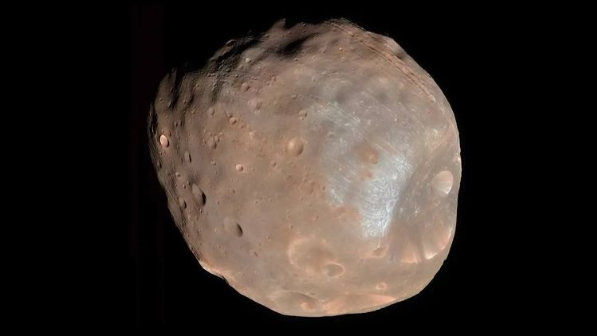NASA recently shared a captivating image of what appears to be a “space potato” on social media, but in reality, it is a photo of Phobos, one of Mars’ moons. Phobos is on a slow collision course with the Red Planet and was captured using the High Resolution Imaging Science Experiment (HiRISE) camera on NASA’s Mars Reconnaissance Orbiter, which has been studying Mars since 2006.
Phobos, named after the Greek god of fear, is significantly smaller than Earth’s moon and is one of Mars’ two natural satellites, along with Deimos. Scientists believe that both moons were once wandering rocks that got caught in Mars’ gravitational field. Recent analysis suggests that Phobos may have originated from the asteroid belt located between Mars and Jupiter.
Both Phobos and Deimos have unstable orbits, with predictions that Deimos may eventually drift out into space, while Phobos could either break up into a ring or crash into Mars. Despite this, Phobos is only moving 6 feet closer to Mars each year, so it is not expected to collide with the planet for another 50 million years.
This gives scientists ample time to study and appreciate Phobos, with its unique features such as streaks of white ice and the Stickney Crater, named after the mathematician Chloe Angeline Stickney Hall. Asaph Hall, who discovered the moons in 1877, was her husband.
